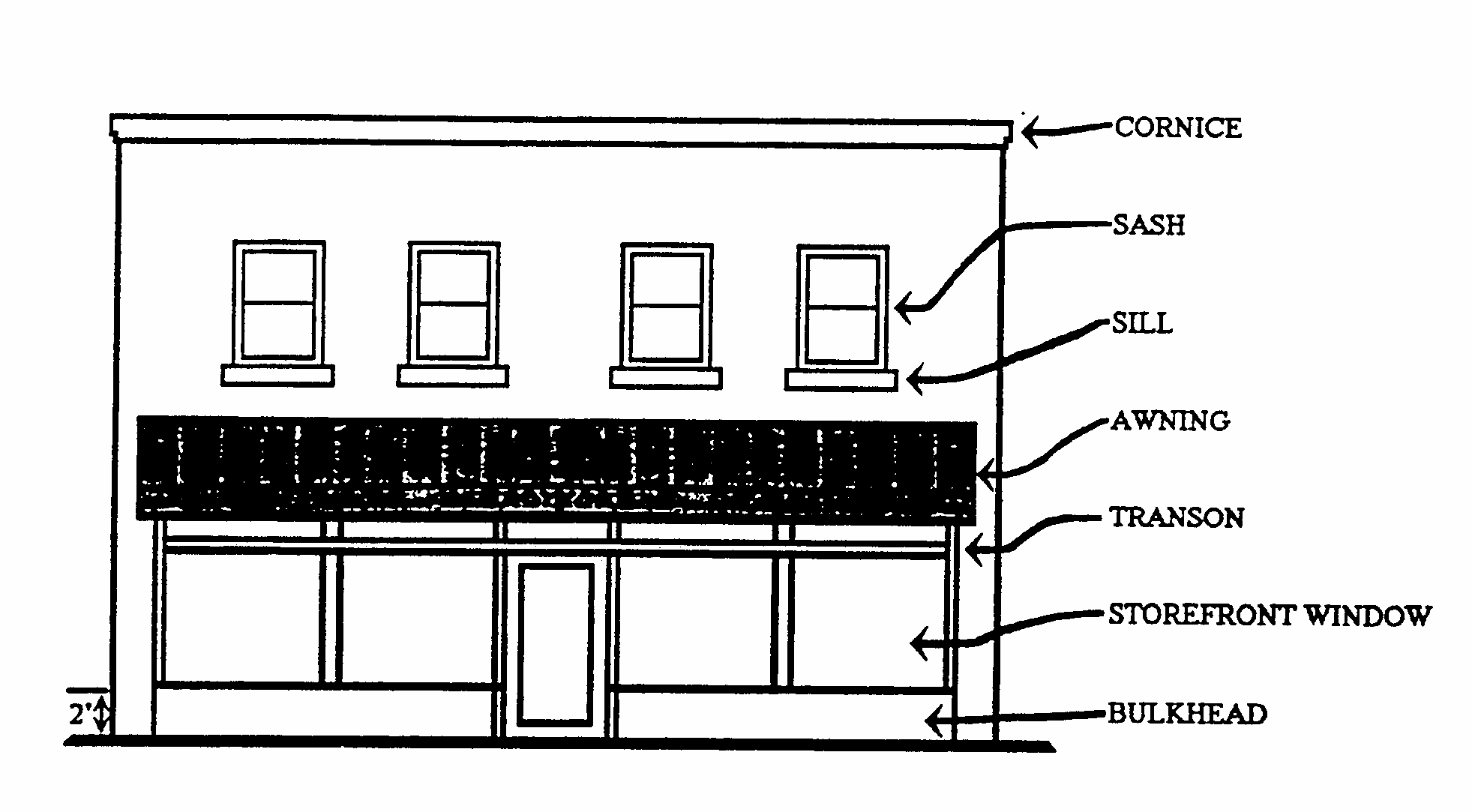 |
Orlando |
 |
Code of Ordinances |
 |
Chapter 62. HISTORIC PRESERVATION AND ARCHITECTURAL DESIGN |
 |
Part 3. APPEARANCE REVIEW STANDARDS |
 |
APPEARANCE REVIEW STANDARDS IN AR OVERLAY DISTRICT |
§ 62.303. Standards for Nonresidential Building Facades.
Where an AR District includes non-residential buildings, the District Report shall also contain standards which at a minimum include the following:
Facade Materials. The appropriateness of restoration and repair of original facade materials, and the manner in which new facade material shall relate to the kinds of materials predominantly used in the district.
Windows. The use of windows as an architectural element is important to facade design. Window size, shape and materials shall relate to surrounding buildings and to pedestrian activity on the street.
Awnings and Canopies. Awnings and canopies which shelter pedestrians from sun and rain, create a transition of scale from the street to the building entry, reduce heat gain at the storefront glass, and provide a distinctive image and identity for each business in the building shall be considered. Size, location and treatment shall be considered when awnings or canopies are used.
Lighting. Lighting may be used to accent signage, product displays, and new improvements. Light sources shall be concealed or shielded where possible, to avoid direct glare.
Signs. The distinctive character of each non-residential area within an AR Overlay District shall be considered and may require its own distinct sign guidelines as described in the District Report, which shall be in addition to the Sign Regulations of Chapter 64.
Parking. Parking facilities shall be located and designed so as to avoid dominating the view from the public right-of-way.

FIGURE 6. TYPICAL BUILDING FACADE
(Ord. of 9-16-1991, Doc. #25099; Ord. of 2-22-1993, Doc. #26392)